News Archive
Filter By
- Abyssinian ground hornbill
- Addax
- Aldabra tortoise
- Allen's swamp monkey
- Alpaca
- American alligator
- American avocet
- American bison
- American flamingo
- American wigeon
- Andean bear
- Aquatic caecilian
- Arapaima
- Asian elephant
- Asian small-clawed otter
- Asian water dragon
- Australian snake-necked turtle
- Bald eagle
- Baltimore oriole
- Barred owl
- Beaver
- Bennett's wallaby
- Binturong
- Black-and-white ruffed lemur
- Black-and-white warbler
- Black-crowned night heron
- Black-footed ferret
- Black-tailed prairie dog
- Black-throated blue warbler
- Blue-billed curassow
- Blue crane
- Bobcat
- Brown pelican
- Bufflehead
- California sea lion
- Canvasback
- Cedar waxwing
- Channel catfish
- Cheetah
- Chicken
- Chinese alligator
- Chinese three-striped box turtle
- Clouded leopard
- Collared brown lemur
- Common raven
- Common yellowthroat
- Corals and sea anemones (anthozoa)
- Cow
- Crocodile monitor
- Cuban crocodile
- Dama gazelle
- Degu
- Dunlin
- Eastern indigo snake
- Eastern newt
- Eastern red-backed salamander
- Eastern screech-owl
- Eld's deer
- Electric eel
- Emperor newt
- Emperor tamarin
- Fennec fox
- Fishing cat
- Gaboon viper
- Geoffroy's marmoset
- Gharial
- Giant leaf-tailed gecko
- Giant panda
- Goat
- Golden-headed lion tamarin
- Golden lion tamarin
- Gray seal
- Gray wolf
- Green tree python
- Grevy's zebra
- Guam kingfisher (sihek)
- Guam rail (ko’ko’)
- Guinea pig
- Harbor seal
- Hartmann's mountain zebra
- Hawk-headed parrot
- Hellbender
- Home's hinge-back tortoise
- Hooded crane
- Iranian fat-tailed gecko
- Japanese giant salamander
- King vulture
- Komodo dragon
- Kori bustard
- Kunekune pig
- Land hermit crab
- Larger Malay mouse-deer
- Lemur leaf frog
- Lesser kudu
- Lesser Madagascar hedgehog tenrec
- Linné's two-toed sloth
- Lion
- Loggerhead shrike
- Long-tailed chinchilla
- Maned wolf
- Meerkat
- Miniature donkey
- Naked mole-rat
- North American porcupine
- North American river otter
- Northern Luzon giant cloud rat
- Northern pintail
- Northern red salamander
- Northern snakehead fish
- Northern tree shrew
- North Island brown kiwi
- Norway rat
- Orangutan
- Orchard oriole
- Ossabaw Island hog
- Ostrich
- Ovenbird
- Pallas's cat
- Panamanian golden frog
- Patagonian mara
- Persian onager
- Philippine crocodile
- Prehensile-tailed porcupine
- Prevost's squirrel
- Przewalski's horse
- Pygmy slow loris
- Red-crowned crane
- Red-fronted lemur
- Red-rumped agouti
- Red-winged blackbird
- Red knot
- Red panda
- Red River hog
- Red ruffed lemur
- Red wolf
- Ring-tailed lemur
- Ruddy duck
- Schmidt's red-tailed monkey
- Scimitar-horned oryx
- Screaming hairy armadillo
- Semipalmated plover
- Semipalmated sandpiper
- Siamang
- Sitatunga
- Sloth bear
- Southern lesser galago
- Southern swamp sparrow
- Southern tamandua
- Spider tortoise
- Striped skunk
- Swainson's thrush
- Tanagers
- Tentacled snake
- Tiger
- Titi monkey
- Turkey
- Twig catfish
- Vietnamese mossy frog
- Virginia opossum
- Von der Decken's hornbill
- Western lowland gorilla
- White-cheeked gibbon
- White-faced saki
- White-naped crane
- White-nosed coati
- Whooping crane
- Yellow-breasted chat
Displaying 1151 - 1175 of 2351 articles.

In Search of a Three-ounce Bundle of Panda
Veterinarians are giving Mei Xiang weekly ultrasounds to track changes in her uterus. Though it's too early to see a possible cub on an ultrasound, SCBI scientists detected a rise in hormones, indicating Mei Xiang will either give birth or experience the end of a pseudopregnancy in 30 to 50 days.
Elderly Red-Fronted Lemur Dies at the Smithsonian’s National Zoo
Primate keepers at the Smithsonian’s National Zoo are mourning the loss of Red Oak, a red-fronted lemur who was humanely euthanized Aug. 9.
Endangered Kiwi Chick Hatches at Smithsonian Conservation Biology Institute
An endangered brown kiwi chick kicked her way out of her egg at the Smithsonian Conservation Biology Institute (SCBI) in Front Royal, Virginia, between Saturday, July 29, and Sunday, July 30.
Smithsonian Scientists Develop Free Tool To Better Understand How Animals Use Their Home Ranges
All across the world, scientists are tracking the movements of animals, collecting considerable data to better understand how animals migrate, what paths they take and what threats they may face along the way. A new statistical model from the Smithsonian Conservation Biology Institute (SCBI) and...
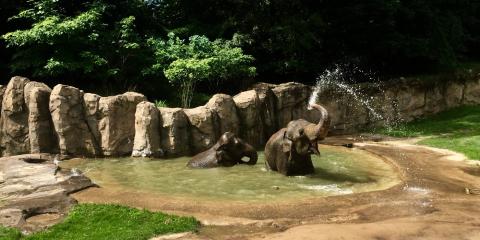
A Day in the Life of an Elephant Keeper
For Asian elephant keepers, working among the giants of the animal kingdom entails training, enriching and caring for the Zoo's multi-generational herd, as well as contributing to research and educating visitors about the conservation of this endangered species.

Reading the Hormones
Behavior can tell the giant panda team quite a bit about the pandas, but the behaviors they exhibit are only half the story. When it comes to predicting when Mei Xiang will give birth, or when she is in the final stages of a pseudopregnancy, scientists rely on a few different factors. They monitor...

Spotlight on Training: Asian elephant Kamala
Ever since 42-year-old Asian elephant Kamala arrived at the Smithsonian’s National Zoo in May 2014, keeper Amanda Bobyack has helped her settle into her habitat. Part of that adjustment included learning husbandry and medical training behaviors that help Bobyack, her fellow keepers and the vet team...

Council Membership Program: Supporting the National Zoo
You can increase your impact on the Smithsonian’s National Zoo and Conservation Biology Institute’s mission by becoming a Council member. Membership at the Council level enables our science research to reach further and helps our Zoo’s exhibits to shine even brighter.
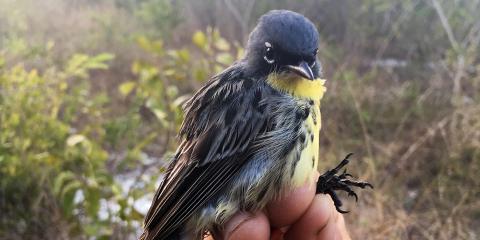
Kirtland's Warbler Expedition Blog
The Kirtland's warbler is an endangered migratory songbird that breeds almost exclusively in Michigan and winters primarily in the Bahamas. The species nests on the ground and will only breed in young Jack Pine forests. Decades of fire suppression prevented the formation of new breeding habitat for...
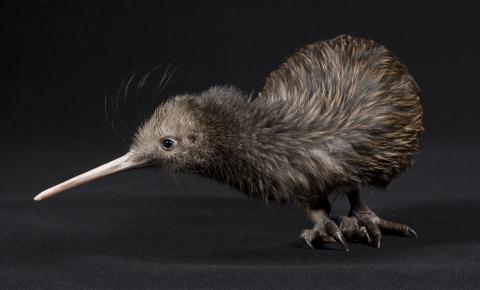
Watch: Kiwi Hatching
See the beginning of a kiwi egg hatching in this behind-the-scenes Facebook Live at the Smithsonian Conservation Biology Institute!
Smithsonian’s National Zoo Sumatran Tiger Cub Update
As the world prepares to celebrate Global Tiger Day this Saturday, July 29, Great Cats keepers have some big news to share about the 2-week-old Sumatran tiger cub in their care: it appears to be a boy!
Elderly Przewalski’s Horse Dies at the Smithsonian’s National Zoo
Keepers at the Smithsonian’s National Zoo are mourning the loss of Minnesota, a Przewalski’s horse who was humanely euthanized yesterday morning.
Holstein Cow Dies at the Smithsonian’s National Zoo
Kids’ Farm keepers at the Smithsonian’s National Zoo are mourning the loss of Tulip, a 13-year-old Holstein cow who was humanely euthanized July 24.
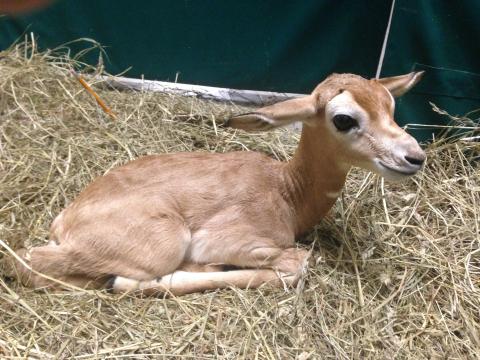
Keepers Hand-Raising Dama Gazelle Calf at Smithsonian Conservation Biology Institute
Animal keepers at the Smithsonian Conservation Biology Institute are hand-raising a dama gazelle calf. The male calf was born July 4.
Three Endangered Red Panda Cubs Born at Smithsonian Conservation Biology Institute
Two litters of red panda cubs were born at the Smithsonian Conservation Biology Institute last month within days of each other.
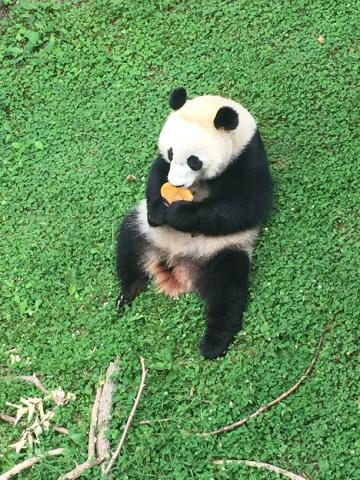
Giant Pandas in Summertime
Activity at the giant panda habitat has slowed since the flurry of breeding season in May. Keepers, Smithsonian Conservation Biology Institute scientists and veterinarians were monitoring Mei Xiang very closely to determine when she would ovulate. Her chance to conceive a cub arrived May 25. Now...
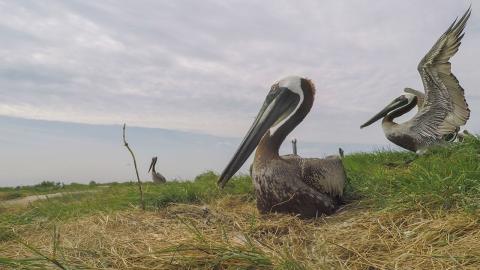
Brown Pelican Banding on Adam Island
On July 11, Smithsonian Migratory Bird Center scientist Autumn-Lynn Harrison set out to deploy GPS tags on the Chesapeake Bay’s brown pelicans to track their migrations and better understand the iconic birds.
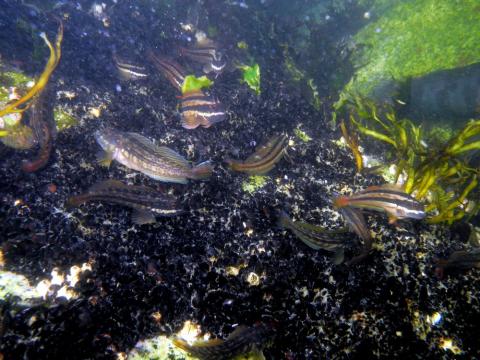
Home, Sweet (Artificial) Home
About 100 kilometers south of Lima on the coast of Peru, an expansive community of marine invertebrates, fish and seabirds has taken up residency in a seemingly unlikely place: in the hard-bottom space created by a barrier, called a breakwater, protecting South America’s first Liquefied Natural Gas...
Smithsonian Scientist and Partners Revolutionize Vital Conservation Tool With Use of Gold Nanotechnology and Lasers
A new cryopreservation study has sweeping implications for wildlife conservation and human health. In a paper published July 13 in ACS Nano, the Smithsonian Conservation Biology Institute and University of Minnesota provide the first-ever reproducible evidence for the successful cryopreservation of...
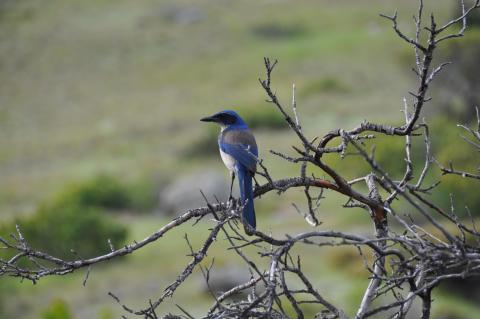
Island Scrub-jays Defy Biological Expectations…Again
The island scrub-jay, a songbird endemic to Santa Cruz Island off the coast of southern California, has made headlines in recent years for bucking evolutionary and biological trends—and is at it again this year.
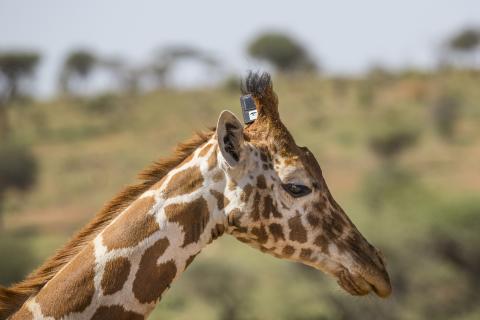
Newly Collared Giraffes in Kenya Could Pave Path for Species Conservation
In June, SCBI scientists and partners fitted the ossicones of 11 reticulated giraffes with GPS collars that send hourly data to researchers via satellite.
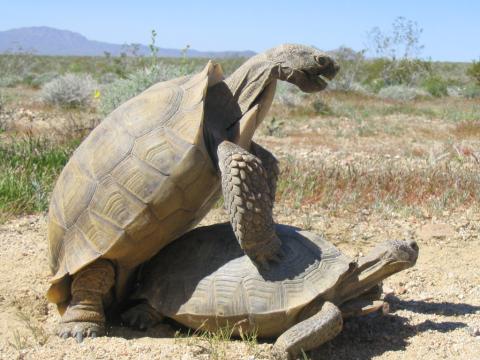
Tortoise Dudes and Duds: A Q&A with SCBI’s Rob Fleischer
In a shell of a paternity test story, Smithsonian Conservation Biology Institute (SCBI) scientists found that male desert tortoises that had been relocated from a threatened habitat to a new nearby home are reproducing at a much, much lower rate than resident males. Genetic paternity testing of 92...
Sumatran Tiger Cub Born at the Smithsonian’s National Zoo
Great Cats keepers at the Smithsonian’s National Zoo are celebrating the birth of a Sumatran tiger, a critically endangered species. The cub’s mother, 8-year-old Damai, gave birth at 4:17 p.m. on July 11.
Red Panda and Dama Gazelle Die at the Smithsonian Conservation Biology Institute
An adult female red panda and an adult female dama gazelle died at the Smithsonian Conservation Biology Institute during the past week. Both deaths were the result of natural causes.
